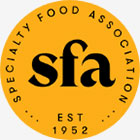

Both are effective in their own right, but choosing between warm and cold typography in food branding and visual identity will significantly impact your brand personality and characterize your relationship with the consumer.
What is warm typography in food branding?
Warm typography in CPG food branding has softer edges, curves, and serifs. This style evokes feelings of comfort, nostalgia, or familiarity. Rounded edges make it appear inviting and friendly. The colors associated with this type of font are typically neutrals or pastel colors such as pink, baby blue, and yellow. Chobani’s custom typeface for their identity is an excellent example of warm typography, which feels family-friendly and very approachable.
“Typography is part of a culture’s visual language.”
Marianne Rosmer Klimchuck, Sandra A. Krasovesc*
What is cold typography in cpg visual identity?
Cold typography has sharper edges and feels modern or minimalist. This type of font has a more rigid structure which conveys a sense of sophistication and elegance. Colors associated with these fonts are usually metallic colors like silver or gold and darker shades such as navy blue or black. Chocolate bars and teas often use cold typography to convey a certain seriousness to their brand personalities that help justify premium price points and a sense of luxury.
When To Use Each Type Of Typography in Food Branding… or Both
All food brands should create a sense of approachability in their packaging design. Still, consider the balance between using a warmer secondary type treatment against a colder visual identity or vice versa. Of course, color, imagery, brand narrative, and imagery can all counterbalance the effect of something too cozy or severe in your package design.
But because your visual identity will stand alone off-pack, carefully weigh the scale of warm to cold in your typographical treatment against the true nature of your brand and your demographic. If you have a playful value product like snacking cookies for children, leaning into warmer typography for your visual identity makes more sense. Conversely, if your product is indulgent or luxurious, like liquor, colder typography may do the heavy lifting to communicate premiumness.
Whether you choose warm or cold font styles for your brand depends on the tone you want to convey to your customers––one determined by your positioning, target demographic, and of course, your brand personality. Above all, it should reflect your brand’s values and personality so customers feel emotionally connected.
Similar to typography, color can impact brand personality. Check out this article to learn more.









